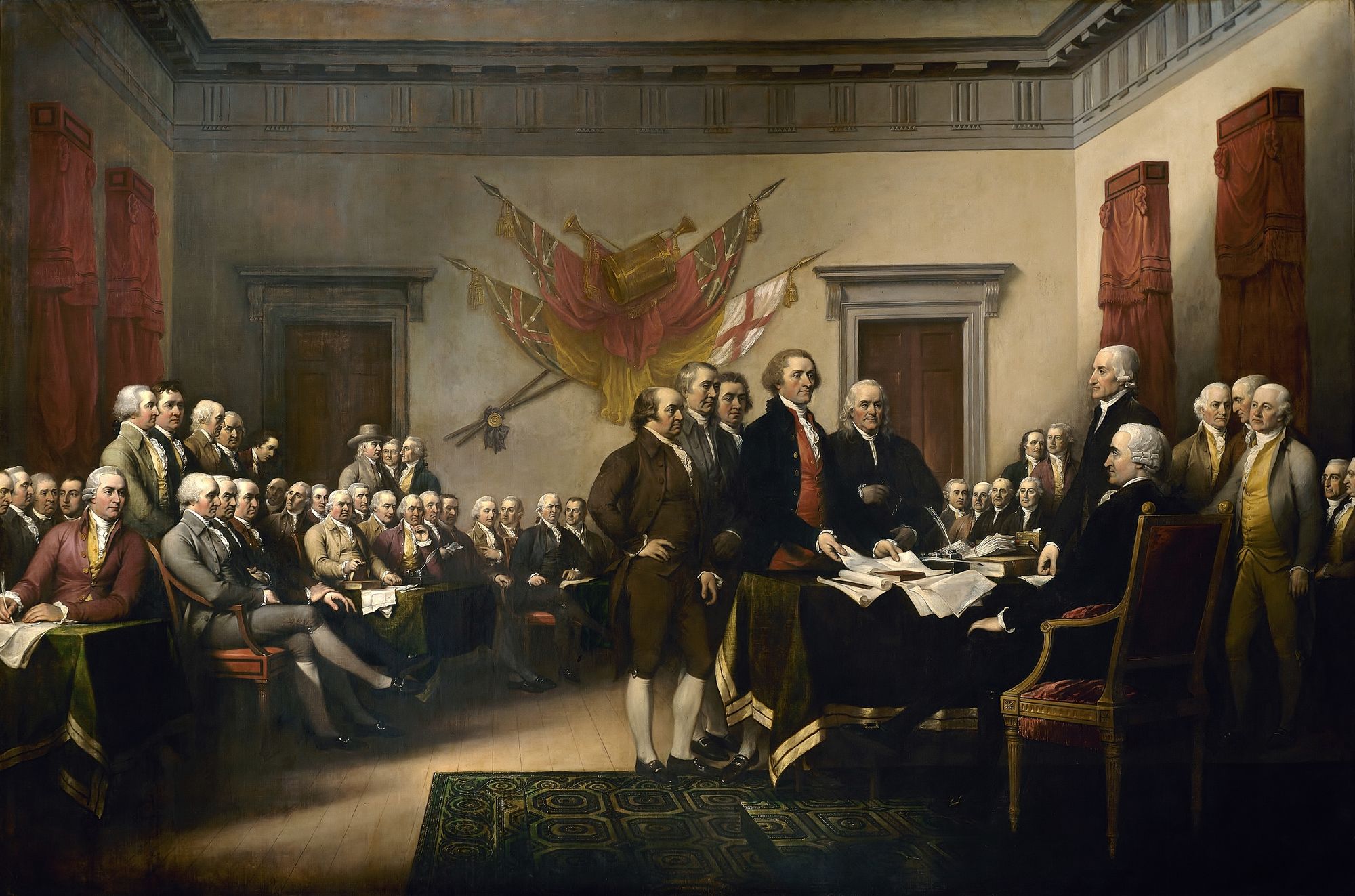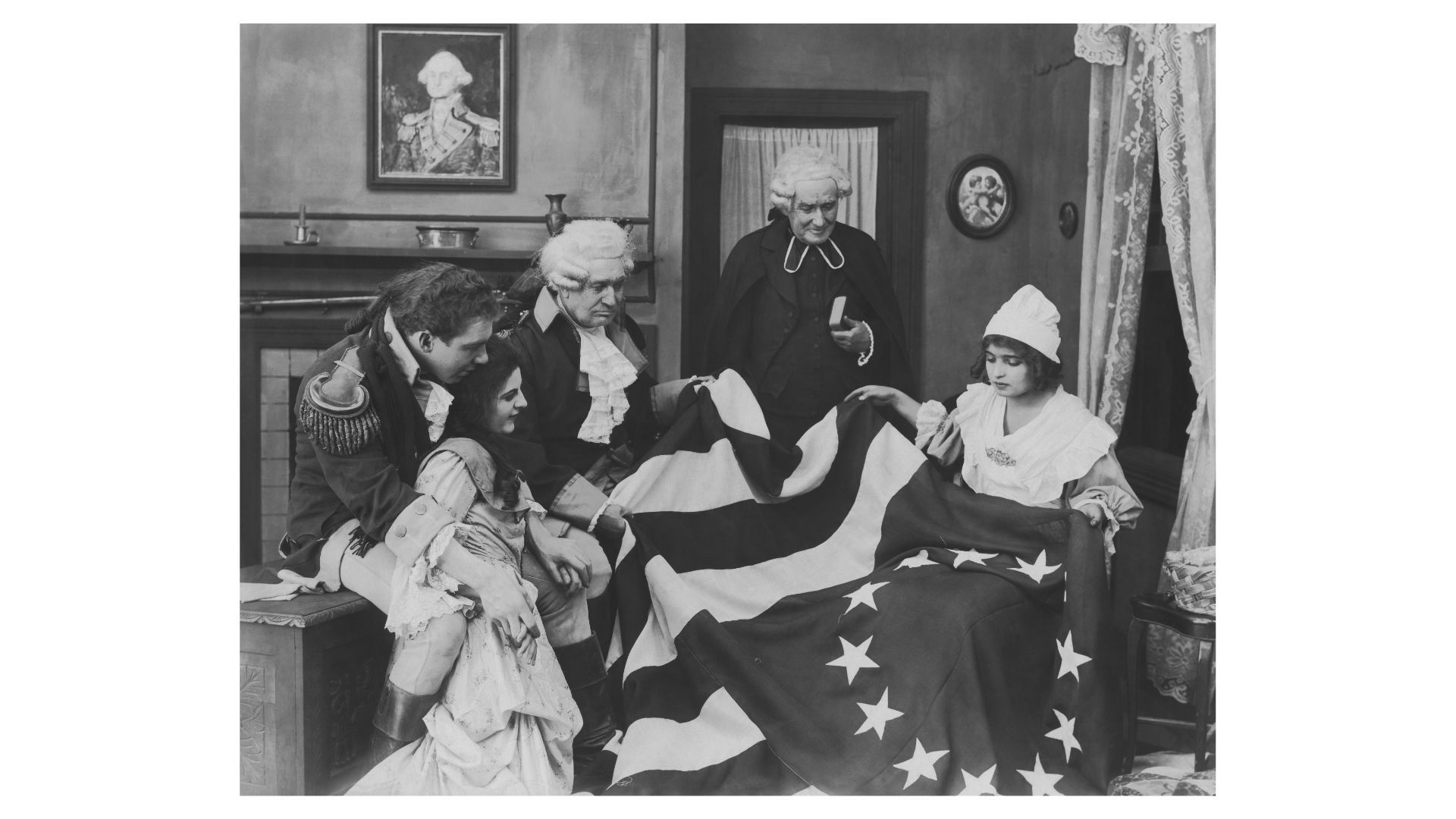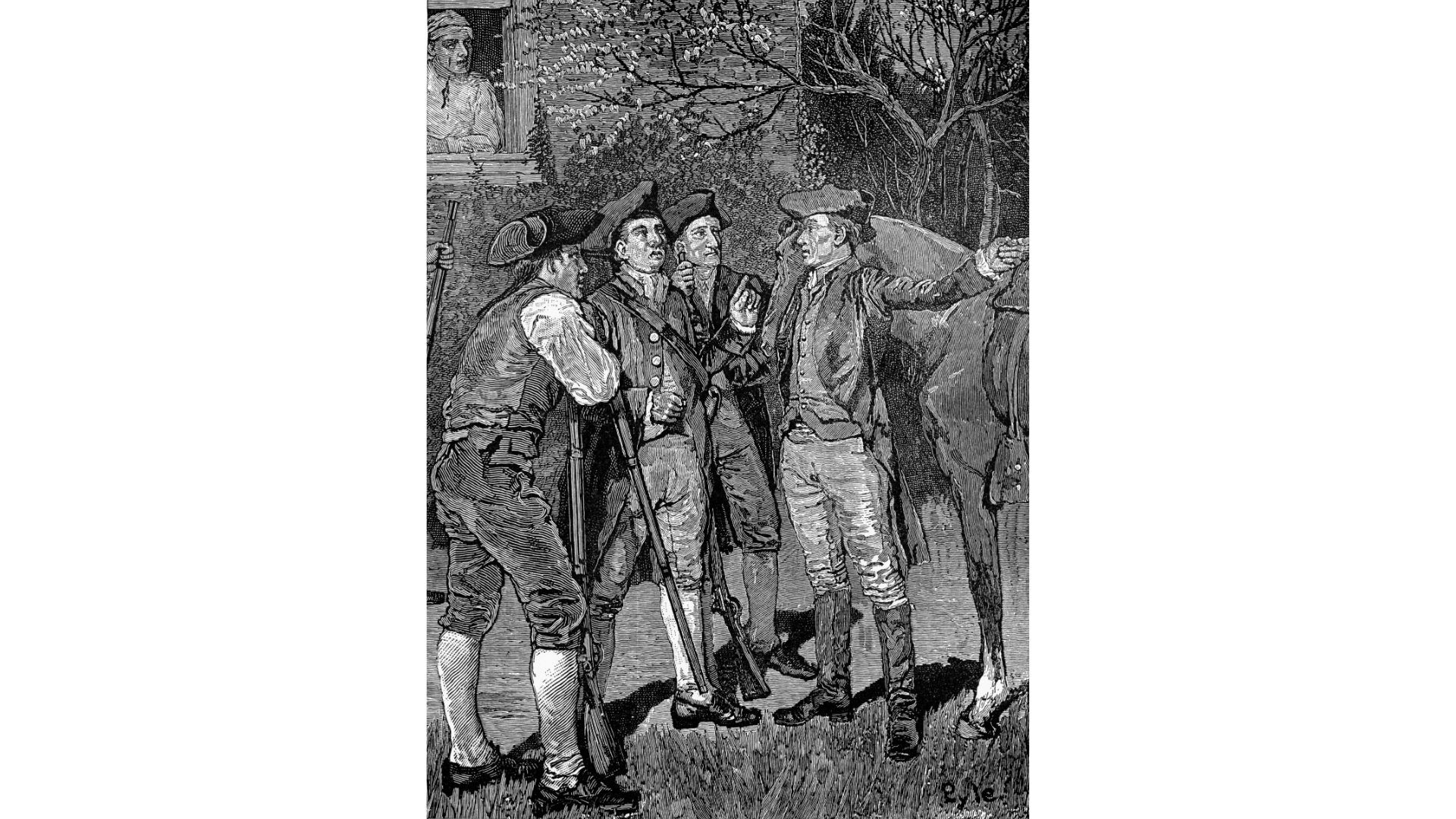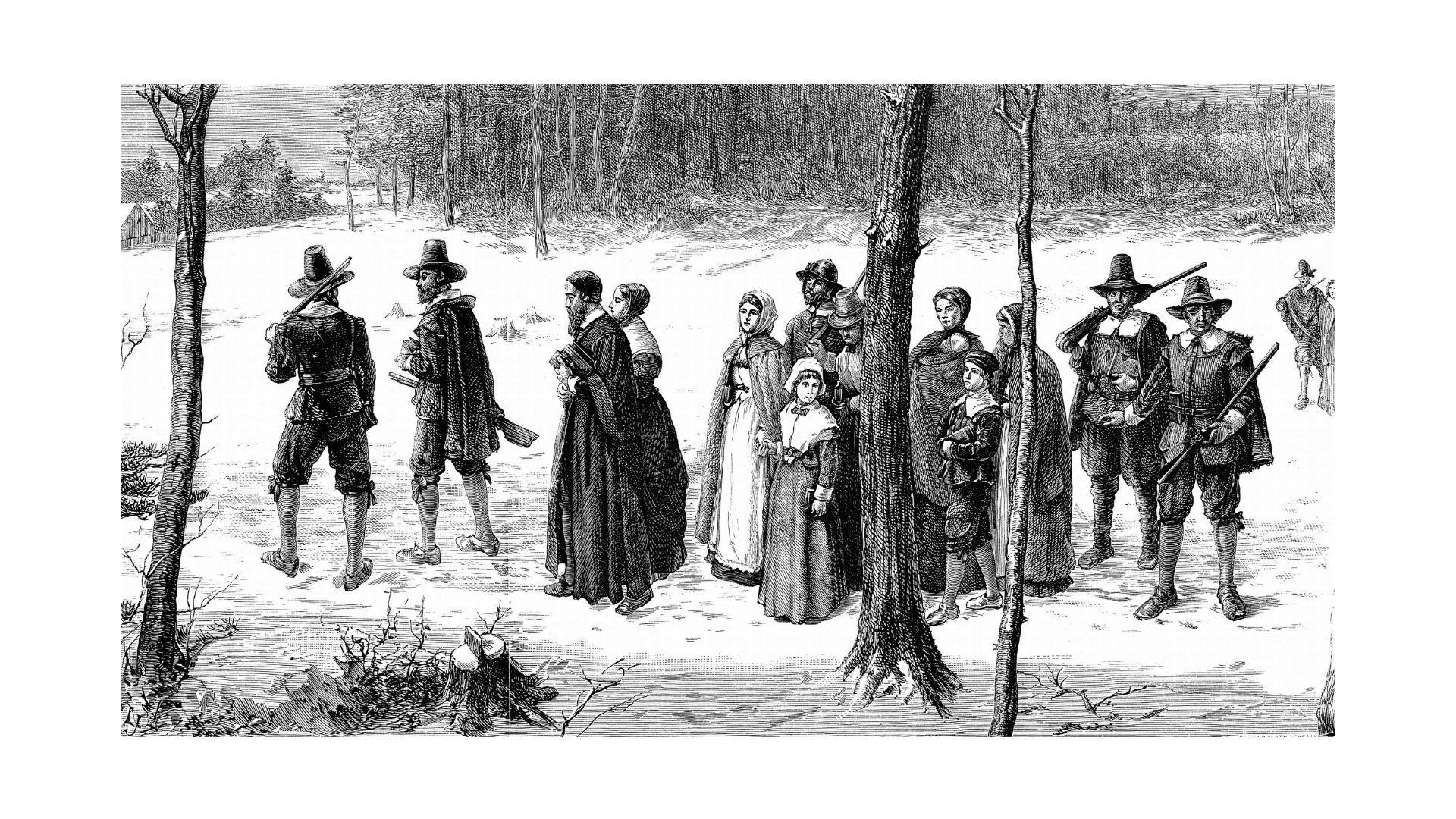American history is filled with some amazing stories. The thing is, some of them aren’t exactly true. Just like any country’s history, the United States has plenty of historical records that are really just great exaggerations.
Many of these exaggerations have been repeated so often that we no longer recognize them as myths. We simply assume that they are a true and bona fide part of our history.
Still, it’s good to know the truth behind some of these myths, as well as what’s been made up, changed, or exaggerated. Read on for 7 of the most persistent U.S. history myths.
[See also: Brainscape's History flashcards]
7 well-known myths in American history
1. The colonists first declared independence on July 4th, 1776

Since this is the date on the Declaration of Independence that we have today, we assume this was the day that the declaration was made. In reality, the Continental Congress voted for independence and drafted the first document on July 2nd. When a revised copy was adopted on the 4th, it was re-dated, and that was the date that stuck in history.
It’s likely that the Founding Fathers would be surprised that we celebrate Independence Day on the 4th of July. After all, independence was declared on the 2nd, the final document was not signed until August, and the U.S. wasn’t formally recognized as a separate country until the colonies and the British signed the Treaty of Paris on September 3, 1783.
In fact, our second president, John Adams, even wrote that “the Second of July, 1776, will be the most memorable Epocha, in the History of America.”
2. Pocahontas fell in love with John Smith and saved the settlers
We all know the story of Pocahontas according to Disney, but that version is pretty far from the truth. First of all, the name “Pocahontas” is actually a nickname that means something close to “spoiled child.” Her real name was Matoaka, but it is true that she was the daughter of the chief Powhatan.
Second, we can categorically deny any romantic relationship between Pocahontas and John Smith. She actually married John Rolfe and returned with him to England. Even this marriage may or may not have been based on love. Pocahontas was kidnapped and held captive in the Jamestown colony for about a year during a war between the native tribes and the Jamestown colonists, and she agreed to her marriage to Rolfe as a condition of her release.
Even the part of the story she is most famous for is dubious. According to Smith, he was saved by Pocahontas from being stoned by her father, but historians disagree on the veracity of this claim.
Some find his claims of this event doubtful because he only started reporting the story about 17 years after it would have happened. Others believe that claims of this being a lie were simply an attempt to undermine his authority. Some even suggest that the whole scenario of a feigned execution and the subsequent saving by a member of the tribe was a traditional way of welcoming an outsider into the tribe.
The fact is that we may never know if Pocahontas saved Smith from stoning, but if she did, it’s unlikely that the reason was her love for him.
3. Betsy Ross designed and sewed the first American flag

While Betsy Ross likely contributed to the 13-star design of the first American flag, there is no historical evidence to suggest that Ross was solely responsible for creating the flag. More likely, the design was a collaborative effort led by Francis Hopkinson, who designed many of the seals and symbols for the early United States.
In fact, Ross never claimed to be the designer of the flag during her lifetime. She is only noted as claiming that she was the person who selected a five-pointed star over a six-pointed one because they were easier to sew.
The enhanced story of Ross’s contributions to the creation of our first flag most likely come from her family. Her grandson William Canby told the story of how George Washington himself came into Ross’s store one day and was impressed by how easily she could make a five-pointed star, commissioning Ross to create the entire flag on the spot. This makes a pretty good story, so it stuck, true or not.
4. Orson Welles caused mass panic in 1938 by adapting H.G. Wells’s The War of the Worlds during a live broadcast, because people thought it was really happening
It’s true that this was widely reported in newspapers across the country, but in reality, the “mass panic” was just a handful of confused people who tried to call into either CBS or their local stations to learn more. Although there were few commercial breaks during the program, The Mercury Theatre on the Air, there were four announcements made during the broadcast stating that it was a work of fiction.
Plus, the broadcast was at a very unpopular time for that station, and there were other, more popular shows on at the time, namely NBC’s The Chase and Sanborn Hour. This would be like trying to cause a mass panic by reporting something on TV at 2 pm on a Tuesday when another major channel is showing a new Game of Thrones special episode (without the help of the internet to spread it along). Few people were listening, and those who were listening were largely not fooled.
So why did panic get reported? Well, as it turns out, this is a clear case of media sensationalism—and it was on purpose. Back then, newspapers and radio were stiff competitors, so many journalists relished an opportunity to make radio seem foolish or even dangerous. (Really not so different now actually.)
5. Paul Revere bravely rode alone across the colonies from Boston to warn of the coming troops, yelling “The British are coming!”

If Paul Revere had really yelled “The British are coming!” in the streets, he wouldn’t have been very effective at getting the word out. First of all, the trip was conducted as quietly as possible, in order to avoid being detained by British patrols. Even when he was conveying his news, Revere most likely said the less catchy phrase, “The regulars are coming out!” Since many people at the time still considered themselves British, it would have been a pretty confusing message otherwise.
Paul Revere wasn’t alone either. Riders were sent on routes in all directions out of Boston. On Revere’s path alone, two other riders were sent with him. In fact, of the three, Revere’s ride was perhaps the least illustrious. Revere was quickly detained by a British patrol, which took his horse, forcing him to cut short his ride and return to Lexington on foot. The others carried on without him. Without the patriotic poem by Henry Wadsworth Longfellow, it’s possible we wouldn’t remember his name today.
6. The troops at the Alamo were fighting to make Texas (and keep America) free
The 250 Texans that died at the Alamo were not fighting for freedom, as much as they were fighting for slavery. You see, Texas was then technically still a part of Mexico that had just been overrun by American settlers. The Mexican government mostly didn’t mind the encroachment, but simply regulated Texas as a part of the whole country.
When Mexico banned slavery in 1829, though, the Texans with Southern-style plantations run by slaves started seriously planning ways to get the freedom to keep slaves.
In an attempt to placate the angry (Mexican) state of Texas, the Mexican government made an exception to the slavery ban in the mostly American-settled region. When General Santa Anna revoked this special exemption in 1835, the Texans revolted.
After winning a few small victories against the Mexican army, the overconfident Texans divided their army and left just a few hundred men in San Antonio. Santa Anna surprised the town in February 1836 and rather than capturing survivors, killed them all at the Alamo.
When Santa Anna was captured during a later surprise attack motivated by the battle at the Alamo, he was forced to trade his freedom for the freedom of Texas. Texas formed its own republic, and immediately reinstated slavery as a legal practice.
7. The Puritans came to the New World seeking religious freedom

A more realistic version of history would be that the Puritans came to the New World to escape other people’s religious freedom.
The originally English Puritans did leave England in 1593 for Protestant Holland in hopes of escaping persecution for their separatist religious beliefs.
Once they got to Holland, though, they were horrified to discover that the Dutch tolerated all sorts of “crazy” religions. Judaism, Catholicism, and even agnosticism and atheism were allowed to be freely practiced alongside the more common Protestantism by the tolerant Dutch.
Worried that this religious freedom would decay the morals of their children, the Puritans then left for the New World in 1620. Two more groups followed, allowing the Puritans to create a Puritan colony in Massachusetts.
The new Massachusetts colony was as intolerant as the Dutch had been tolerant, forcibly banishing anyone for not conforming to Puritan values. Eventually, though, the Puritan church’s power broke down. Children born in the New World slowly abandoned the Puritan religion for the less strict versions of Protestantism brought by later groups of immigrants.
By 1691, King Charles II put the final nail in the coffin of the fully Puritan state by enhancing protection for religious dissenters in the British colonies.
The truth about our history
As you can see with these U.S. history myths, our history has a tendency to revise itself over the years. Although all based in truth, the stories have grown over time into our own myths in American history. Sure, they may not be entirely be true, but they can sure feel true, which makes them as important to know as the factual events. It is just important to recognize where the fact ends and the good (fictional) story begins.
While these seven events are some of the most prominent myths in American history, there are many others that you can learn about in Brainscape’s U.S. History 101 flashcards. Check it out!
